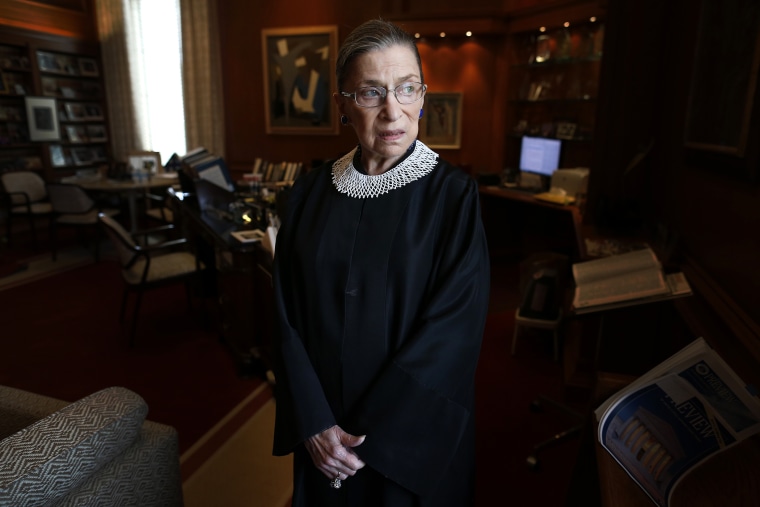Some liberals are calling on one of the most respected liberals on the Supreme Court to step down.
That might sound backwards, but that’s the case made by respected legal scholar Erwin Chemerinsky, dean of the University of California at Irvine Law School:
“Only by resigning this summer can [Ginsburg] ensure that a Democratic president will be able to choose a successor who shares her views and values.”
He argues this is the only way to guarantee that President Obama can replace her with another progressive, rather than making the Court play electoral roulette in 2016. And Chemerinsky worries that Democrats could lose the Senate in the midterms and make a lame-duck confirmation of an Obama nominee especially difficult.
The idea has some legs. Jeffrey Toobin, an influential legal expert for The New Yorker, jumped right in, publishing a list of potential replacements for aging members of the Court. But this haste to replace has drawn a useful backlash from many legal experts and liberals.
The best headline came from Gawker: "If You Admire Ruth Bader Ginsburg So Much, Stop Asking Her to Quit." That nails perhaps the weirdest assumption in this debate — that Ginsburg can just be replaced by another cookie-cutter Democratic pick. In fact, she probably can't.
Ginsburg brings a deep experience, practical feminism and unapologetic liberalism that is increasingly rare to the bench.
The court should not be reduced to an ideological contest, and the liberals rushing to replace Ginsburg should remember that since her 1983 appointment, the Court has only moved to the right. That trend has held for appointees by presidents in both parties. George W. Bush replaced Sandra Day O’Connor, for example, with a more conservative Samuel Alito. That may be no surprise from a conservative president, but as a practical matter, President Obama’s replacement of John Paul Stevens with a more conservative Elana Kagan also functioned to nudge the Court to the right. (There’s no single way to measure the ideological record of the Justices, and Elana Kagan hasn’t been on the bench for very long, but studies of the available records confirm this rightward trend in her case as well.)
Ultimately, there are many reasons for the Court’s shift to the right, including problems with the confirmation process and the dogged efforts of the conservative legal movement to reshape the courts.
As liberals watch an increasingly assertive court intervene in everything from the Affordable Care Act and state Medicaid funding to unlimited spending in elections and limits on corporate accountability, the concern about the bench’s direction is understandable. But if legal progressives want to get in on this battle, it’s probably best to start by advancing more progressive nominees across the lower courts and federal government, not badgering one of the best progressives off the highest court in the land.
